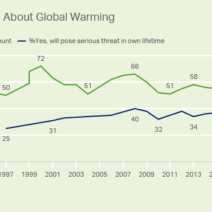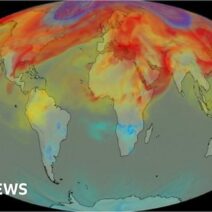As the global community grapples with the insidious effects of climate change, the relationship between technology and the environment has come under scrutiny. The escalating urgency to mitigate global warming has ushered in an era where technological innovation may be pivotal. This exploration examines how diverse technological advancements hold the promise of curbing greenhouse gas emissions, fostering sustainable practices, and reshaping societal perspectives toward environmental stewardship.
At the forefront of this technological metamorphosis is renewable energy. Solar, wind, hydroelectric, and geothermal technologies have evolved significantly over the past decades. These clean energy sources not only diminish reliance on fossil fuels but also show a concrete path towards achieving energy independence. Solar photovoltaic cells, for instance, have witnessed a dramatic decrease in cost, making them accessible for both residential and commercial deployment. Coupled with advancements in energy storage systems, like lithium-ion batteries, the intermittent nature of solar and wind energy can be effectively managed, ensuring a reliable energy supply. With the increased efficiency of these technologies, entire cities can now transition towards an emission-free energy landscape.
Moreover, the rise of smart grids represents another technological triumph. Smart grids utilize digital technology to monitor and manage the transport of electricity from all generation sources. These systems enhance the reliability of electricity distribution, minimize waste, and allow for the seamless integration of renewable energy. By employing real-time data analytics, utilities can optimize energy consumption patterns in households and industries alike, ultimately promoting energy efficiency. For example, during peak demand periods, smart grids can incentivize consumers to shift their electricity usage, thereby reducing strain on the grid and decreasing carbon footprints.
Another area where technology plays a transformative role is in carbon capture and storage (CCS). This innovative approach involves capturing carbon dioxide emissions from industrial processes or directly from the air and storing it underground or utilizing it for other purposes, such as in the production of synthetic fuels. The development of novel materials and processes promises to enhance the efficiency and reduce the costs of CCS technology. By adopting such measures, major industries can significantly lower their net emissions, contributing to climate stabilization efforts.
Transportation, an industry notoriously responsible for carbon emissions, is also undergoing a technological revolution. The rapid enhancement of electric vehicles (EVs) exemplifies this shift. As battery technology advances, EVs become cheaper, more efficient, and increasingly prevalent. The transition from combustion engines to electric propulsion systems not only curtails air pollution but also decreases dependence on fossil fuels. Furthermore, the incorporation of autonomous driving technologies can lead to optimized traffic flows, reducing congestion and emissions. Indeed, the intersection of environmentally conscious innovation and transportation hints at a greener future.
The agricultural sector, known for its substantial environmental impact, is also poised for transformation through technology. Precision agriculture employs data analytics, satellite imaging, and IoT devices to optimize nutrient and water use, fostering sustainability. By utilizing these tools, farmers can achieve higher yields with less input, thereby reducing waste and emissions. Moreover, the adoption of genetically modified organisms (GMOs) can lead to crops that are more resilient to climate change effects, ultimately supporting food security in an unpredictable climate landscape.
In the realm of information technology, artificial intelligence (AI) and machine learning present compelling opportunities to combat global warming. These technologies can analyze vast datasets to predict environmental changes and optimize resource usage. For instance, AI applications can assist in constructing energy-efficient building designs or managing urban spaces to minimize the heat island effect. Such innovative uses of data-driven insights are essential for developing strategies that promote environmental sustainability.
On a micro-level, technological innovations are impacting daily life through sustainable consumer choices. Smart home technologies facilitate energy and water conservation, enabling consumers to track their usage in real-time. By fostering awareness, individuals can make informed decisions that collectively decrease demand for resources. Similarly, eco-friendly apps and platforms encourage sustainable consumption habits, urging users to consider the environmental impact of their purchases.
As these advancements manifest, it is paramount to consider the societal implications of technology in the fight against climate change. Engaging communities in conversations about technology and sustainability creates an informed public ready to challenge the status quo. Educational initiatives can promote a cultural shift that values environmental stewardship, making sustainability a priority across all walks of life. This measure transcends technological capability—catalyzing a paradigm shift toward a consciousness that prioritizes ecological integrity.
In conclusion, the intersection of technology and climate action presents a fascinating landscape filled with promise and potential pitfalls. It is essential, however, to maintain vigilance concerning the unintended consequences of technological solutions. Emphasizing responsible and equitable implementation ensures that advancements benefit the broader society, allowing technology to serve as a catalyst for environmental restoration rather than exploitation. By leveraging innovation and creativity, we stand at a critical juncture—a moment that can either foster resilience against climate change or exacerbate its effects. The key lies in harnessing our technological capabilities to birth a sustainable future, where harmony between human ingenuity and nature is not merely an aspiration, but a reality.







